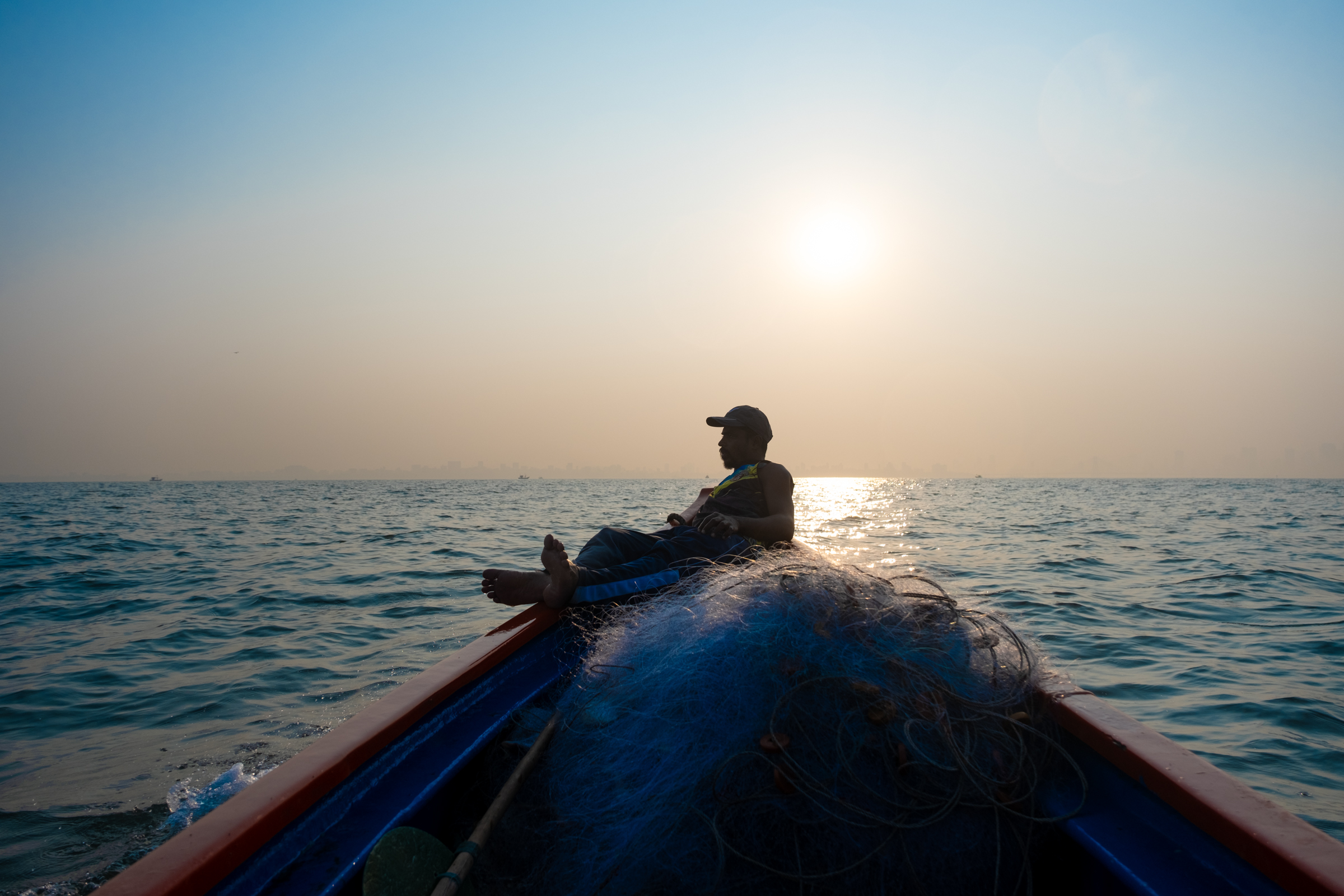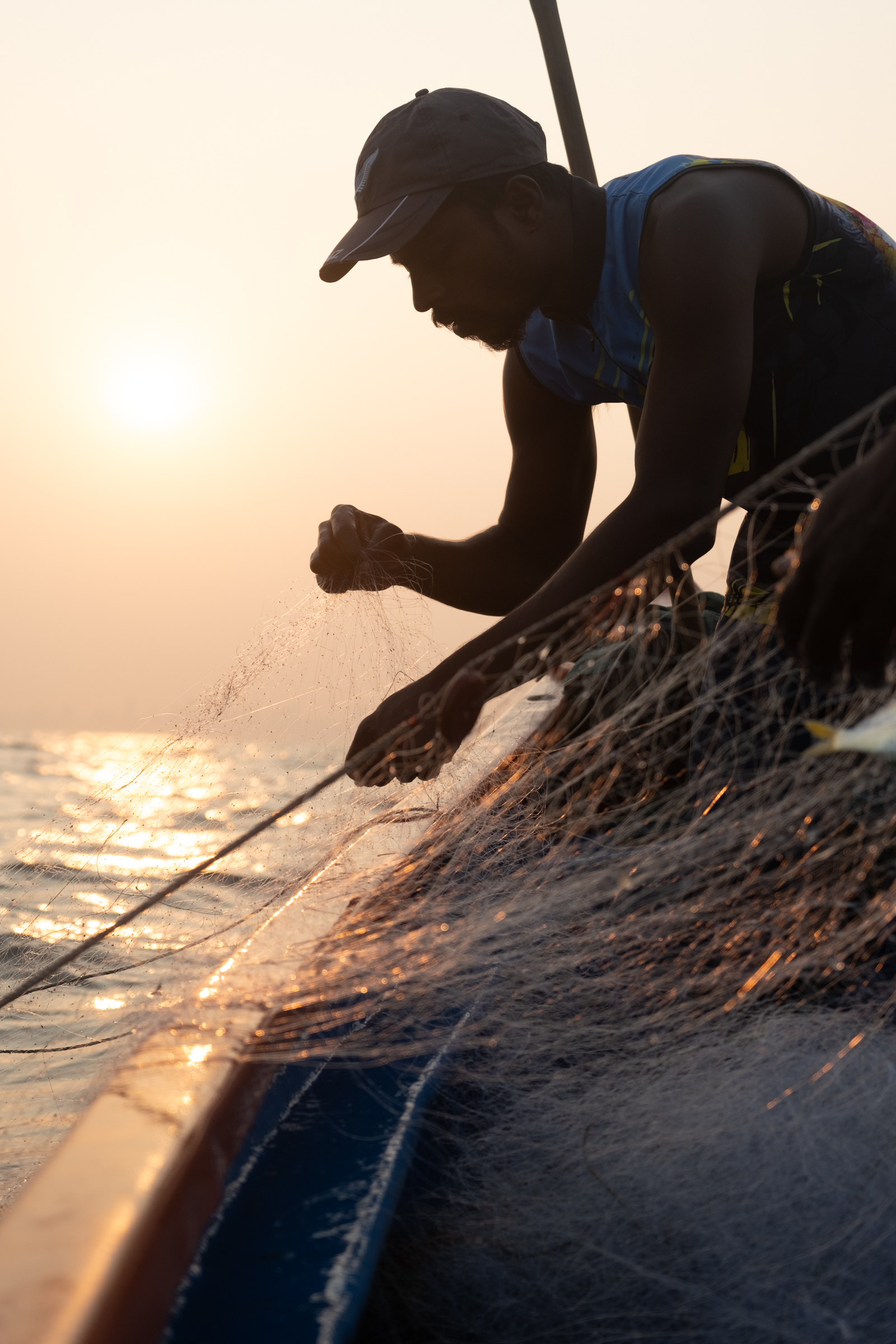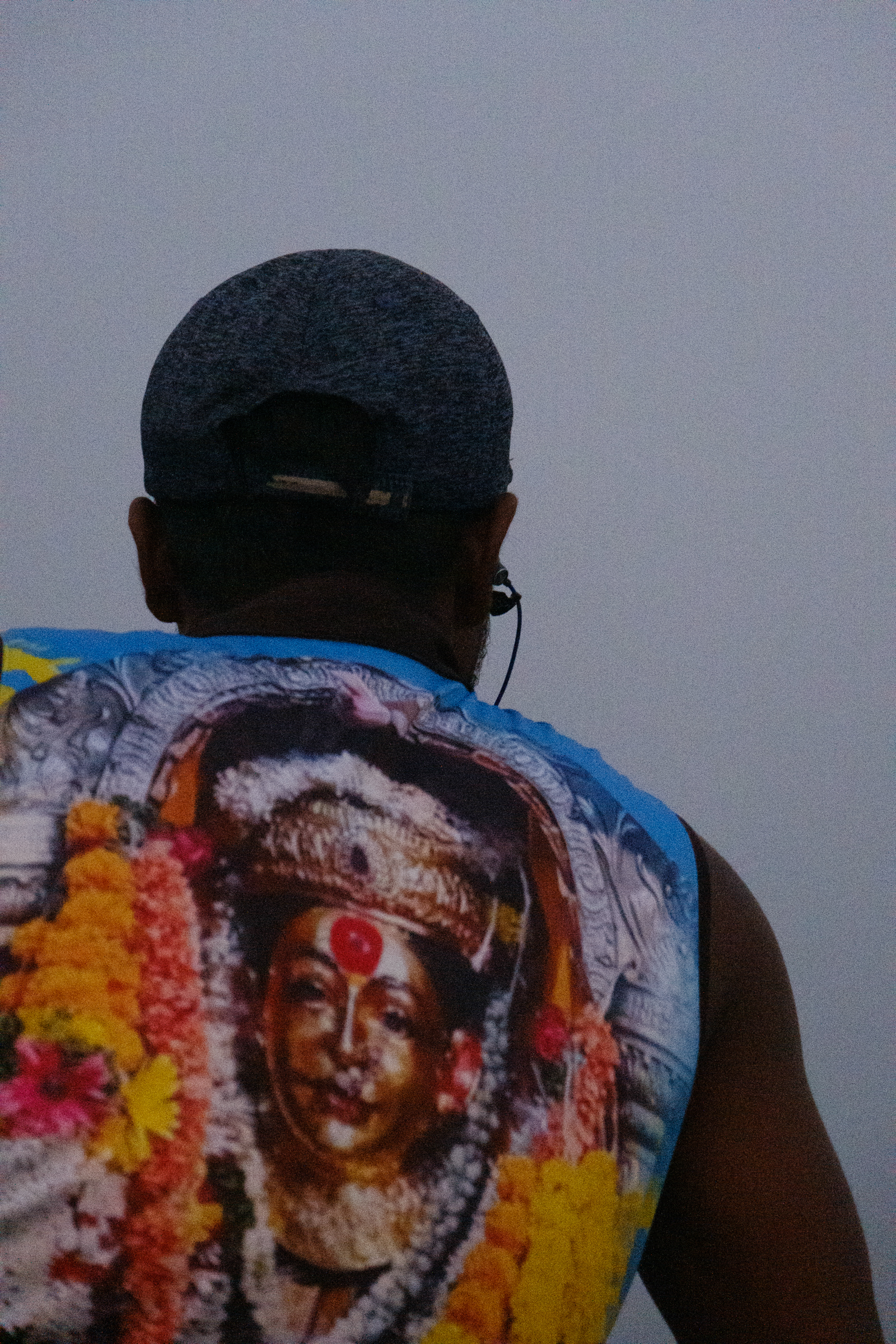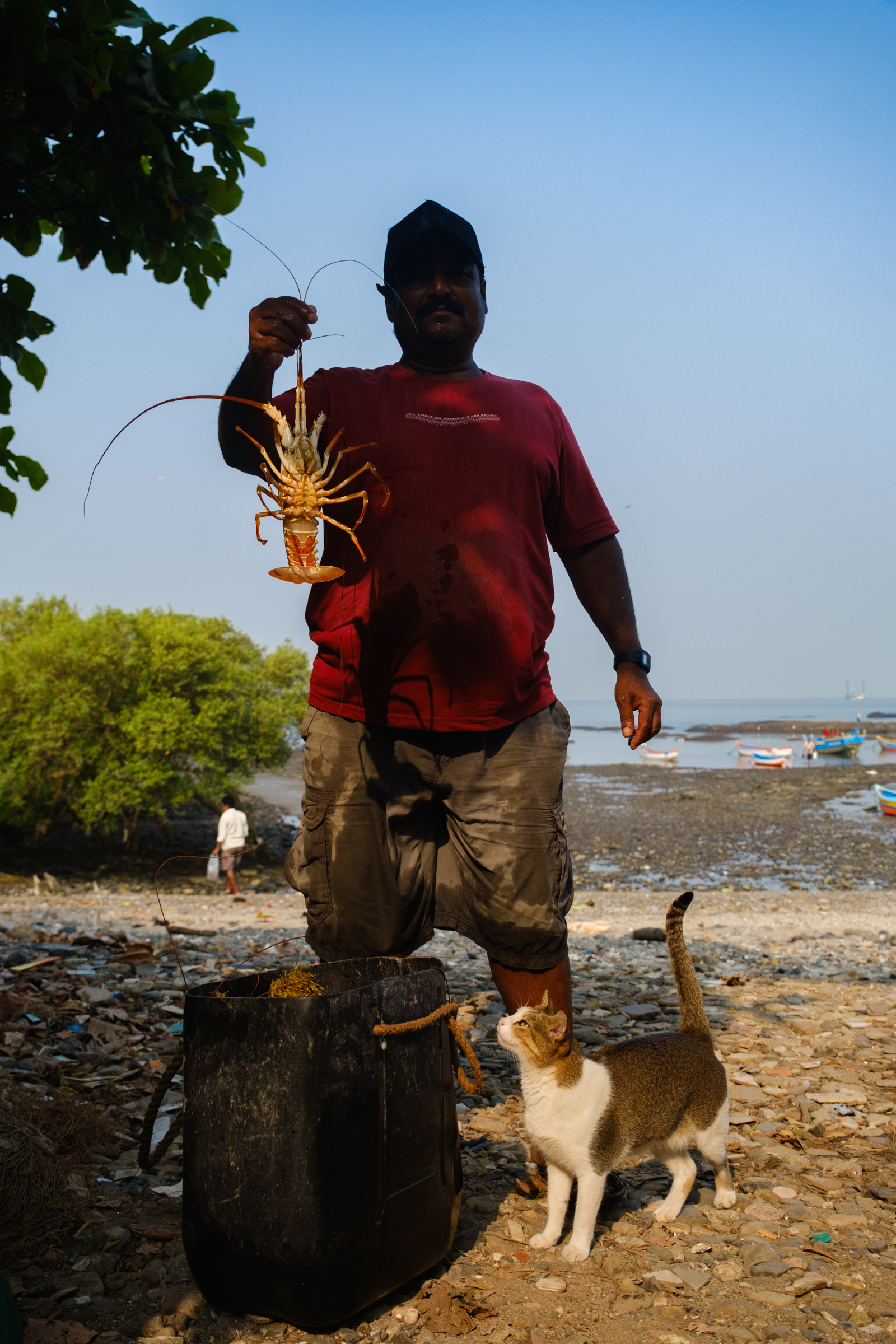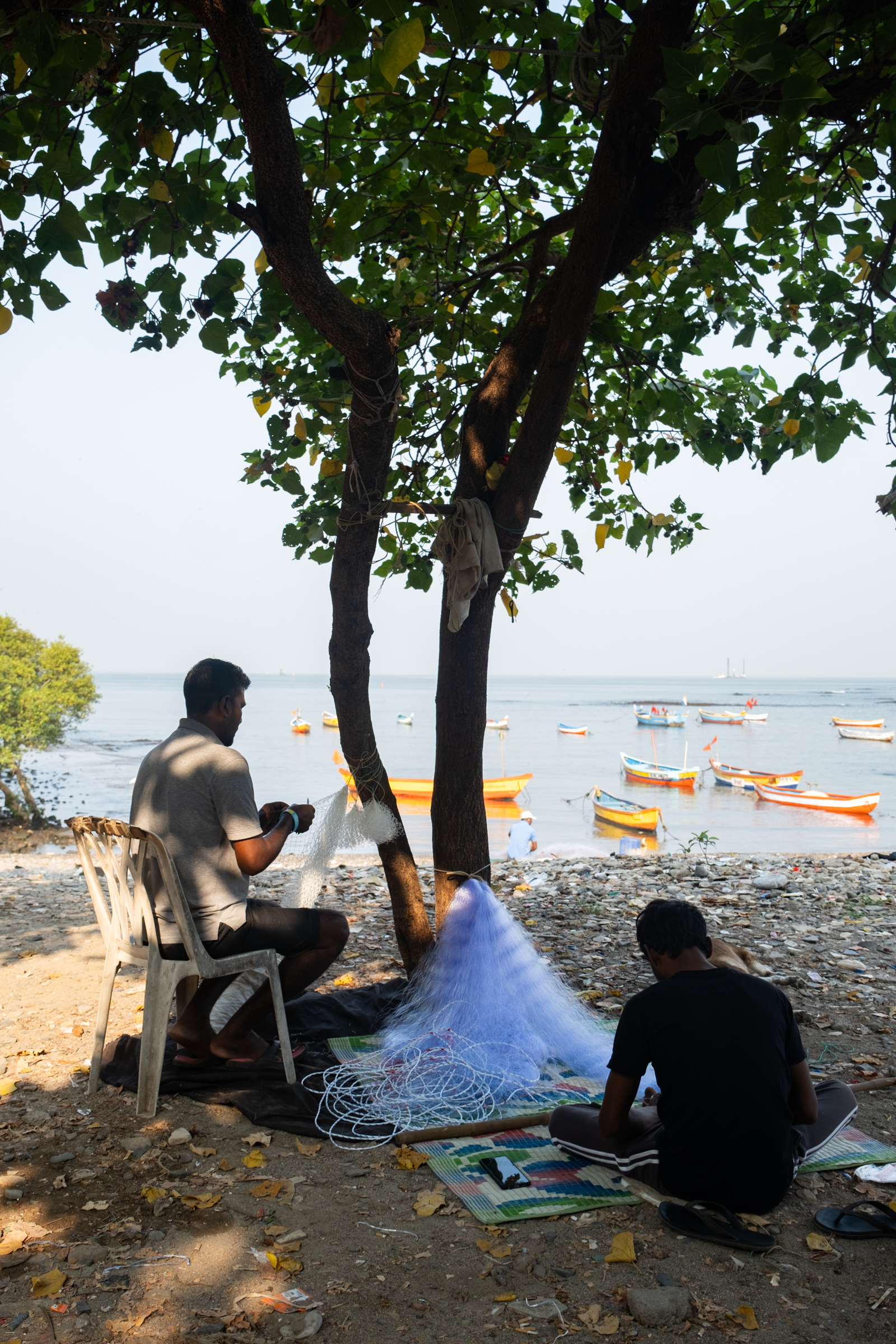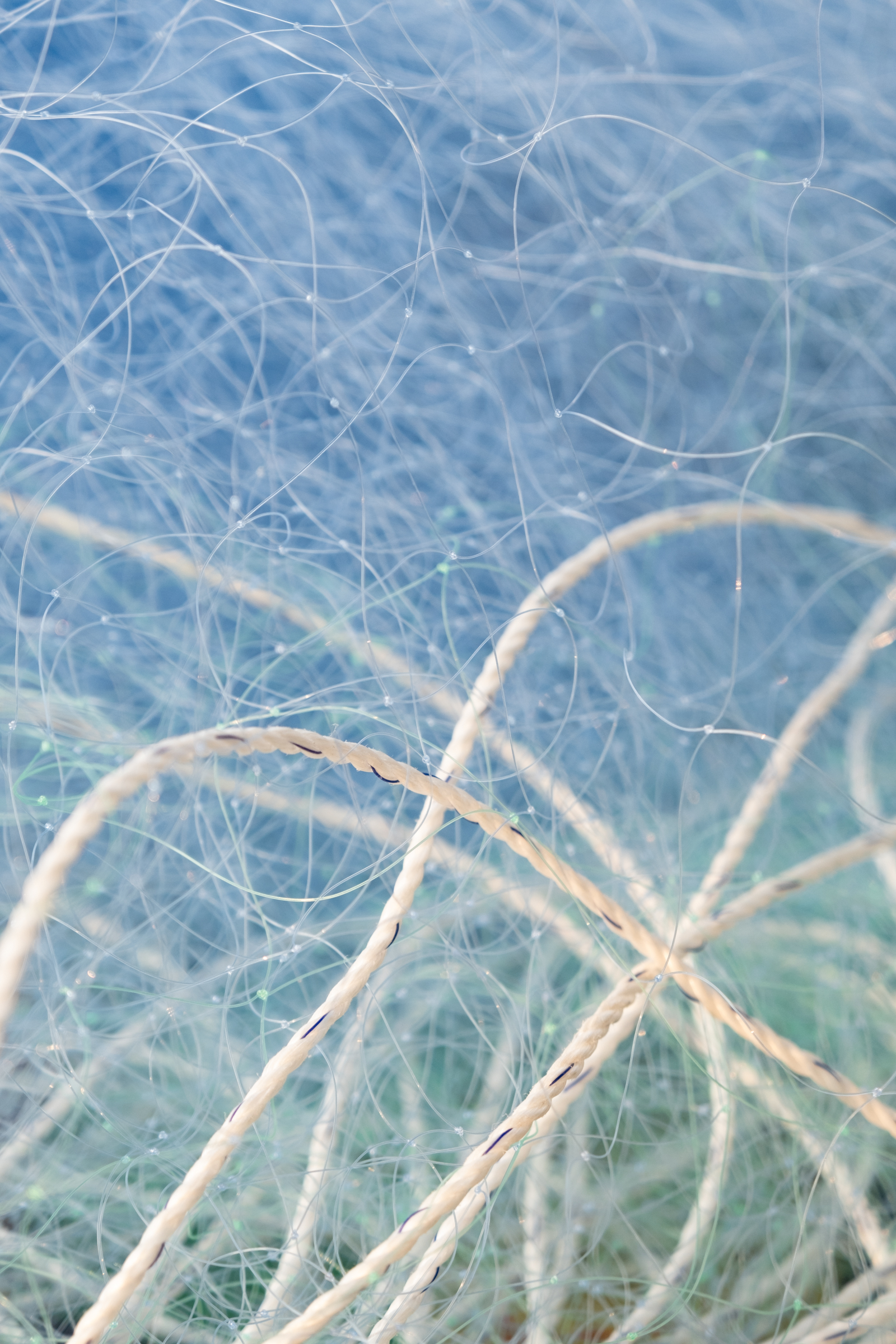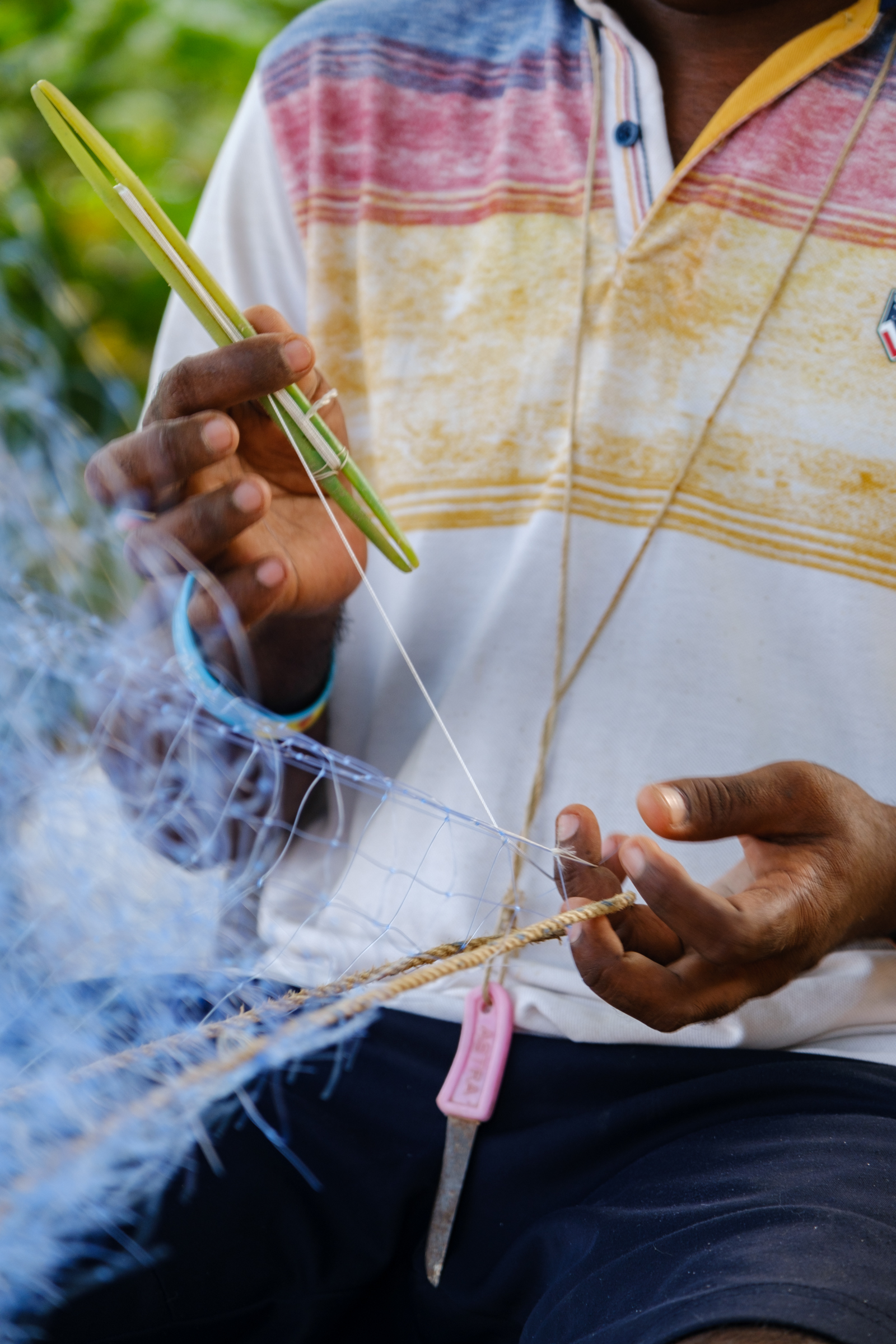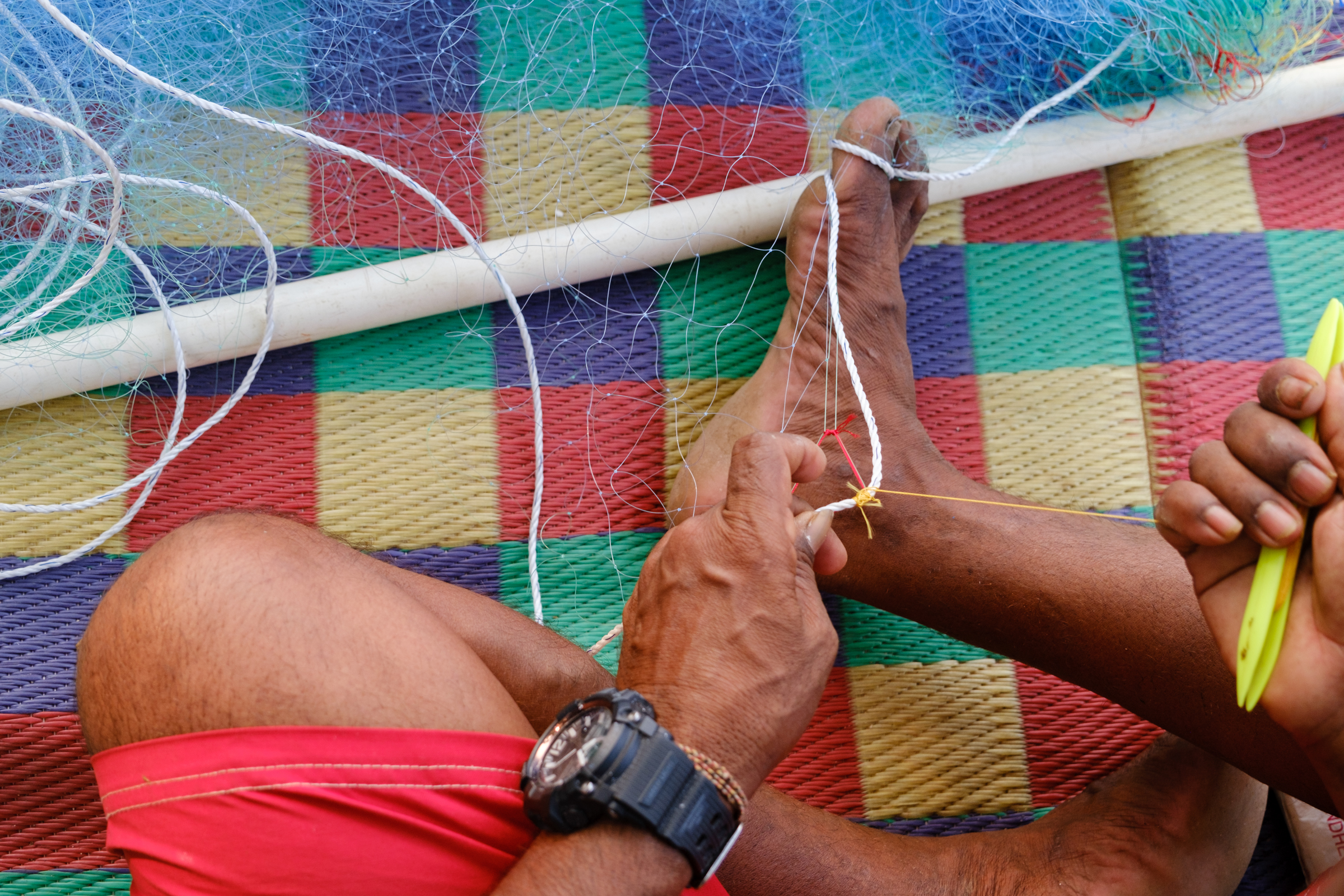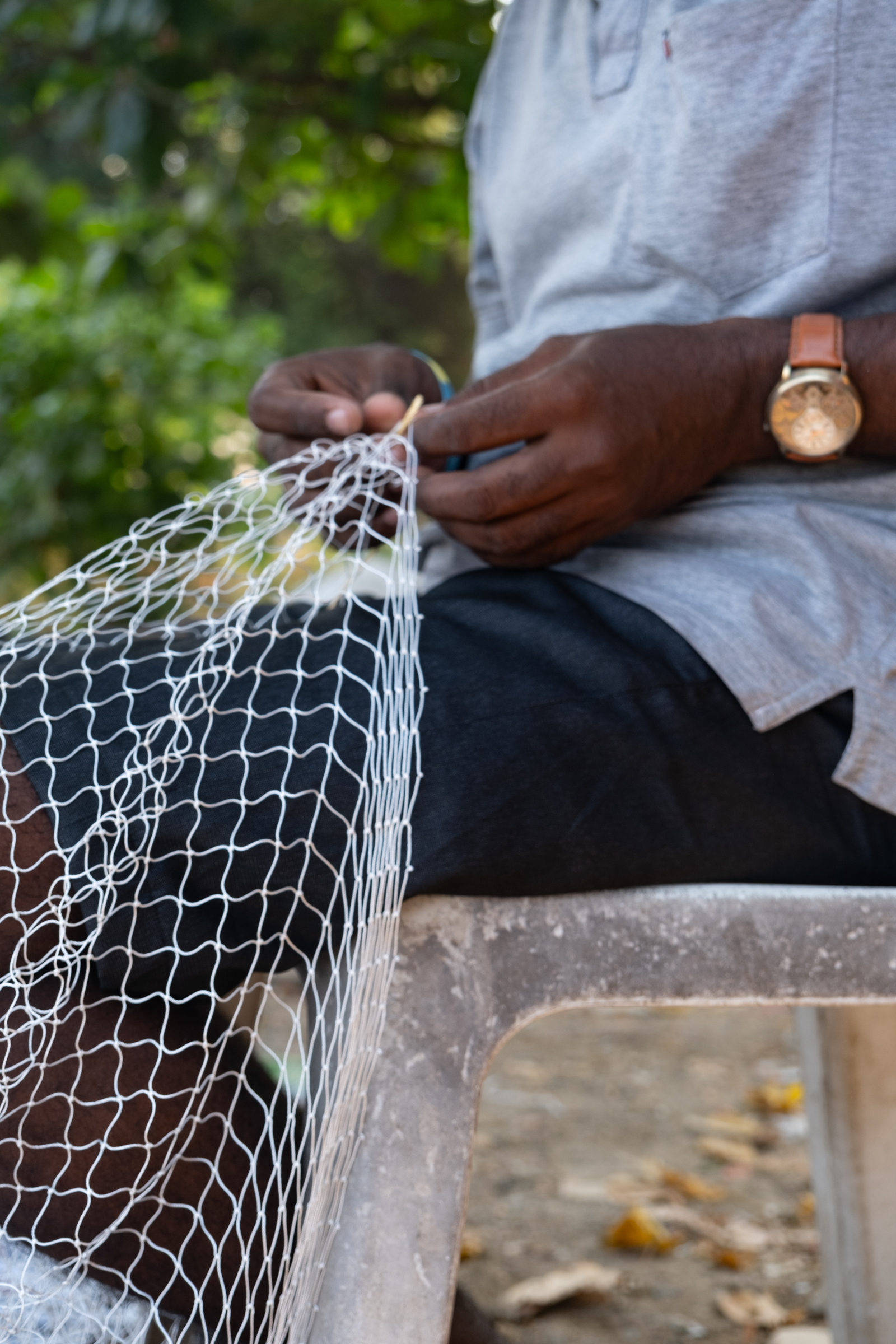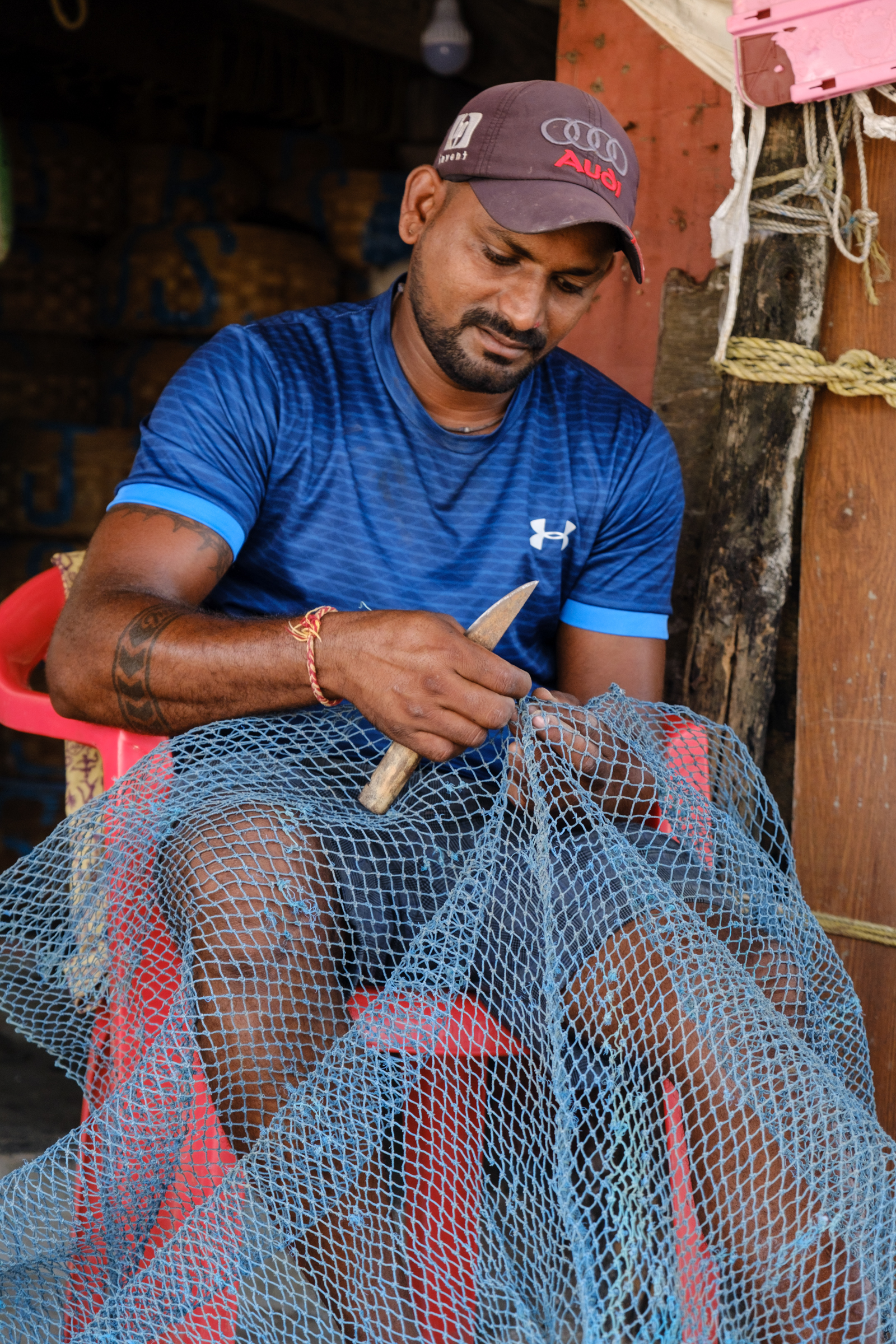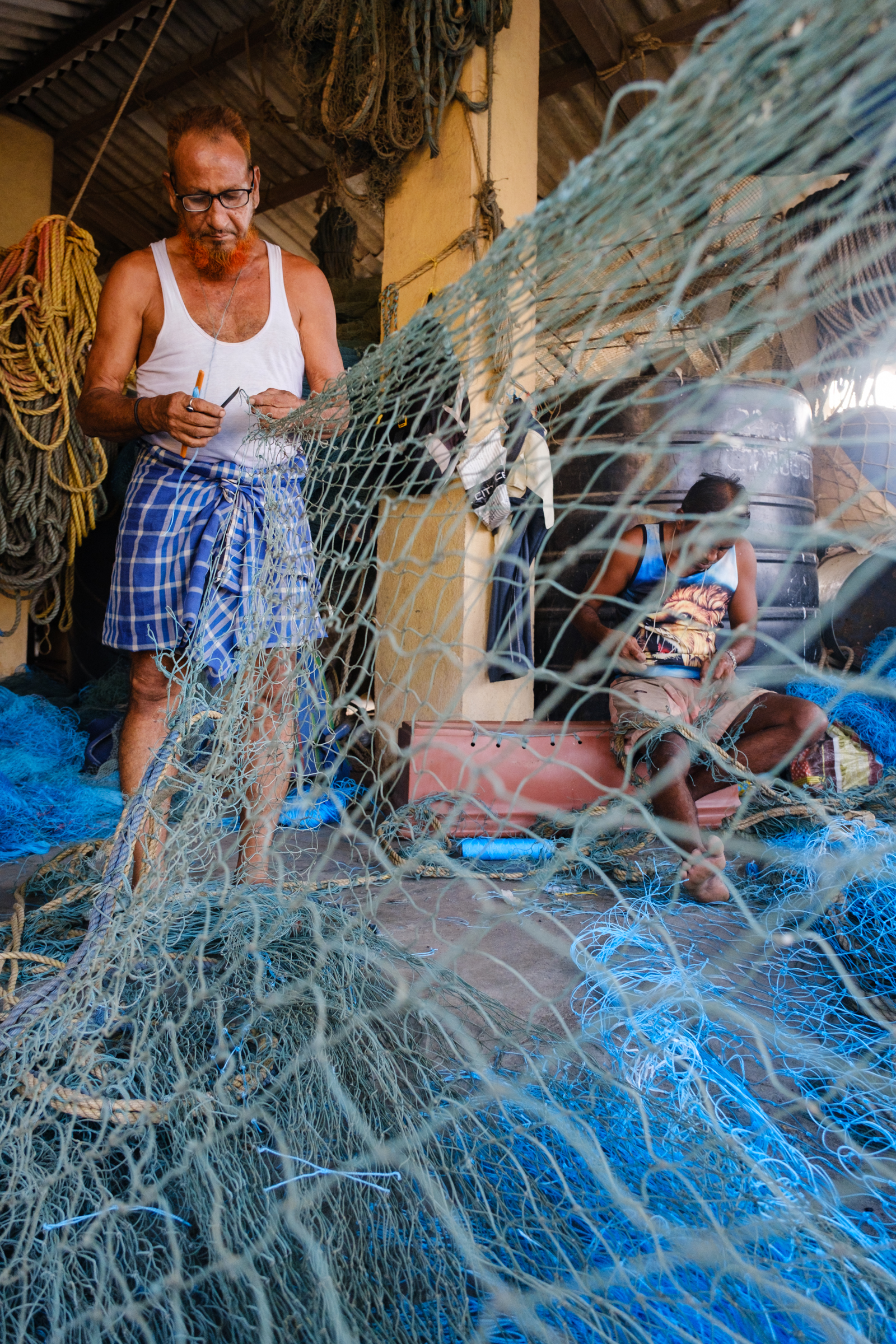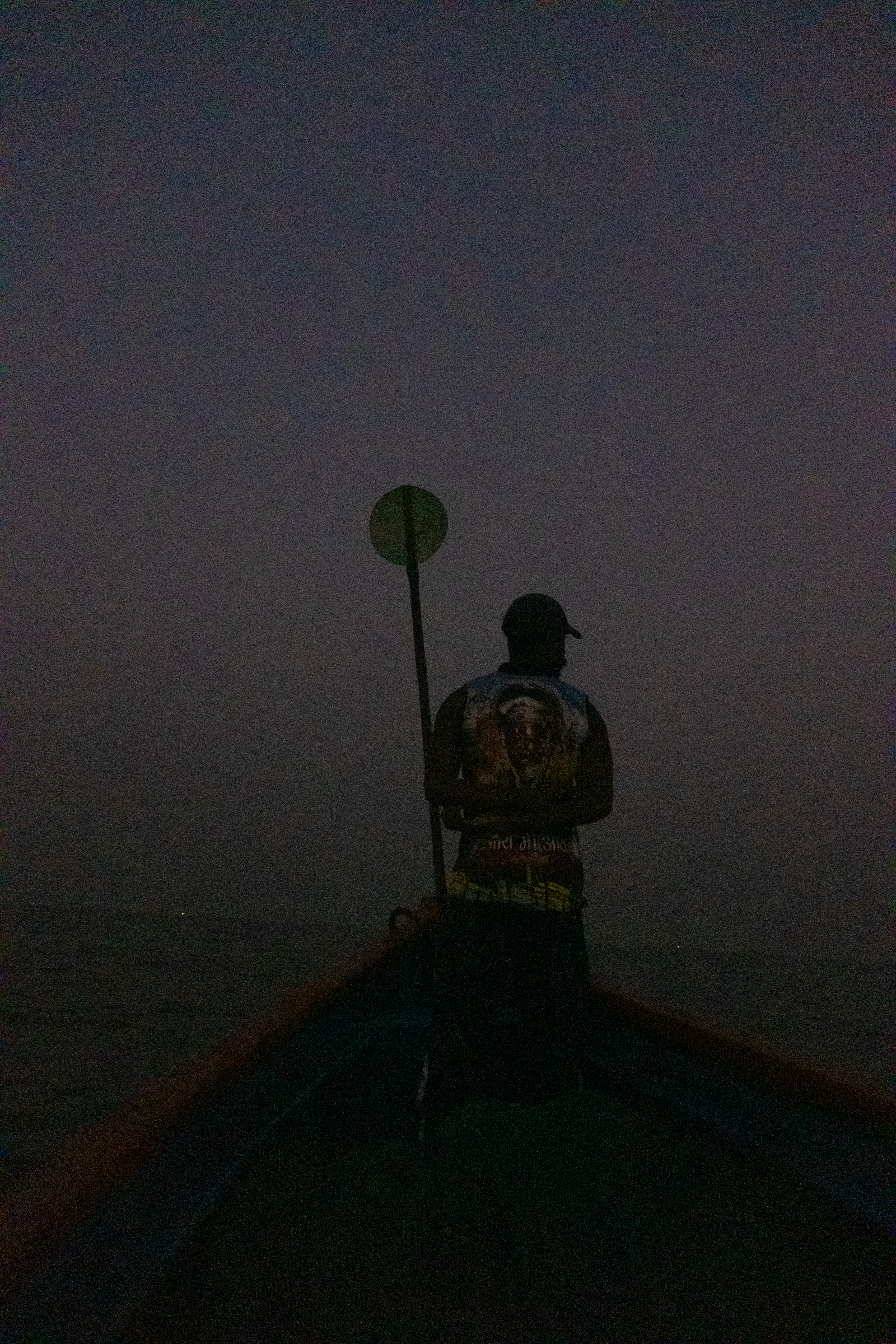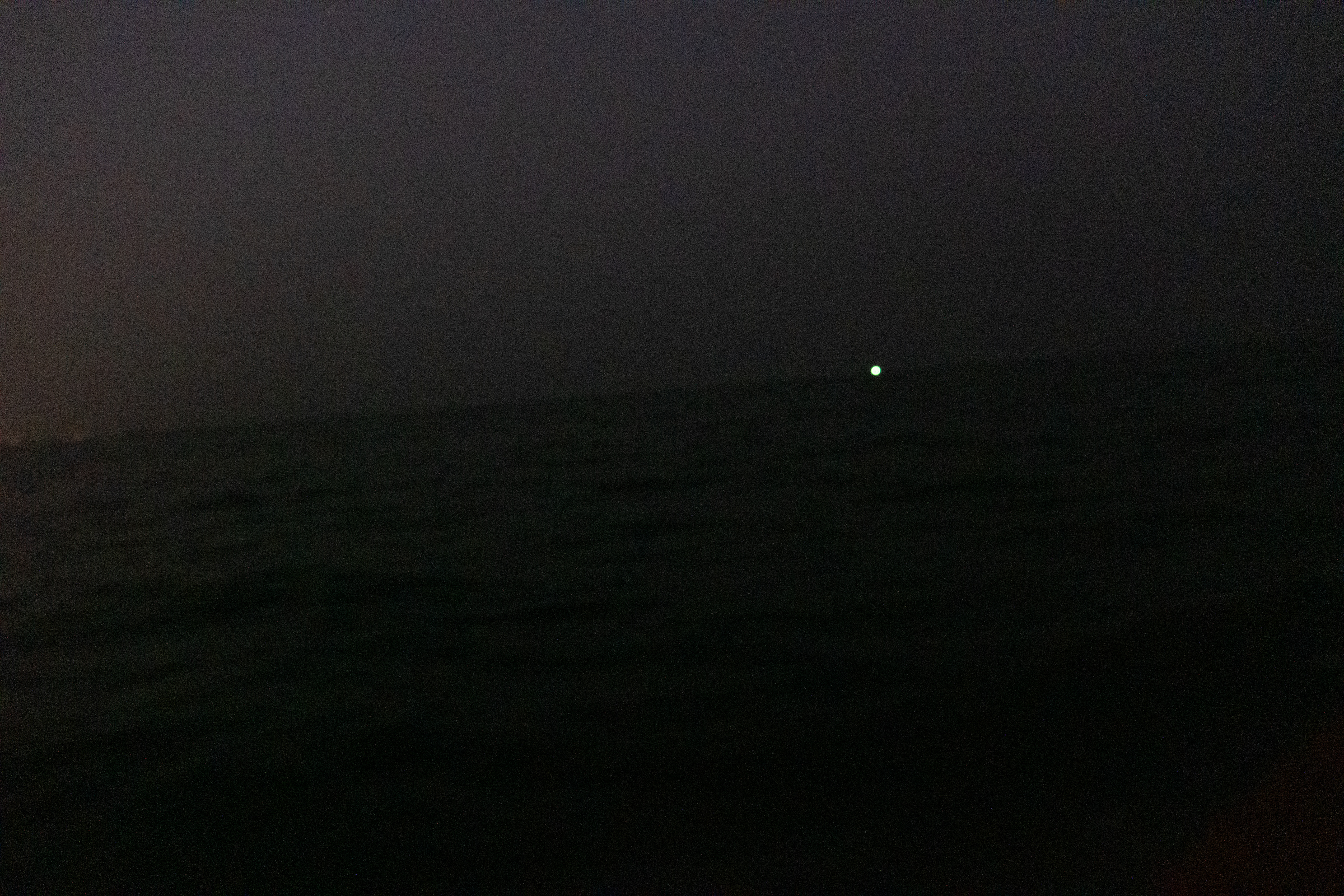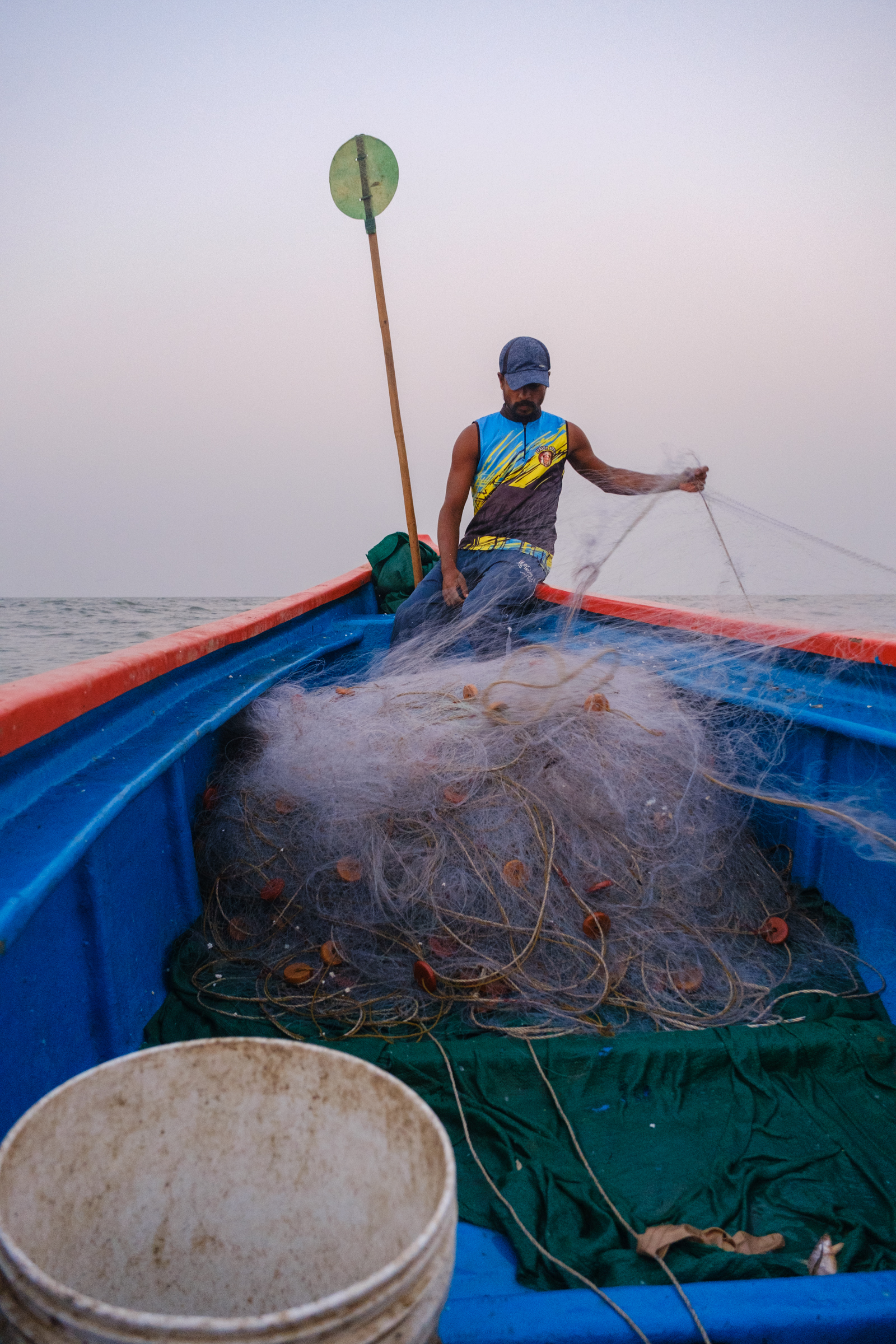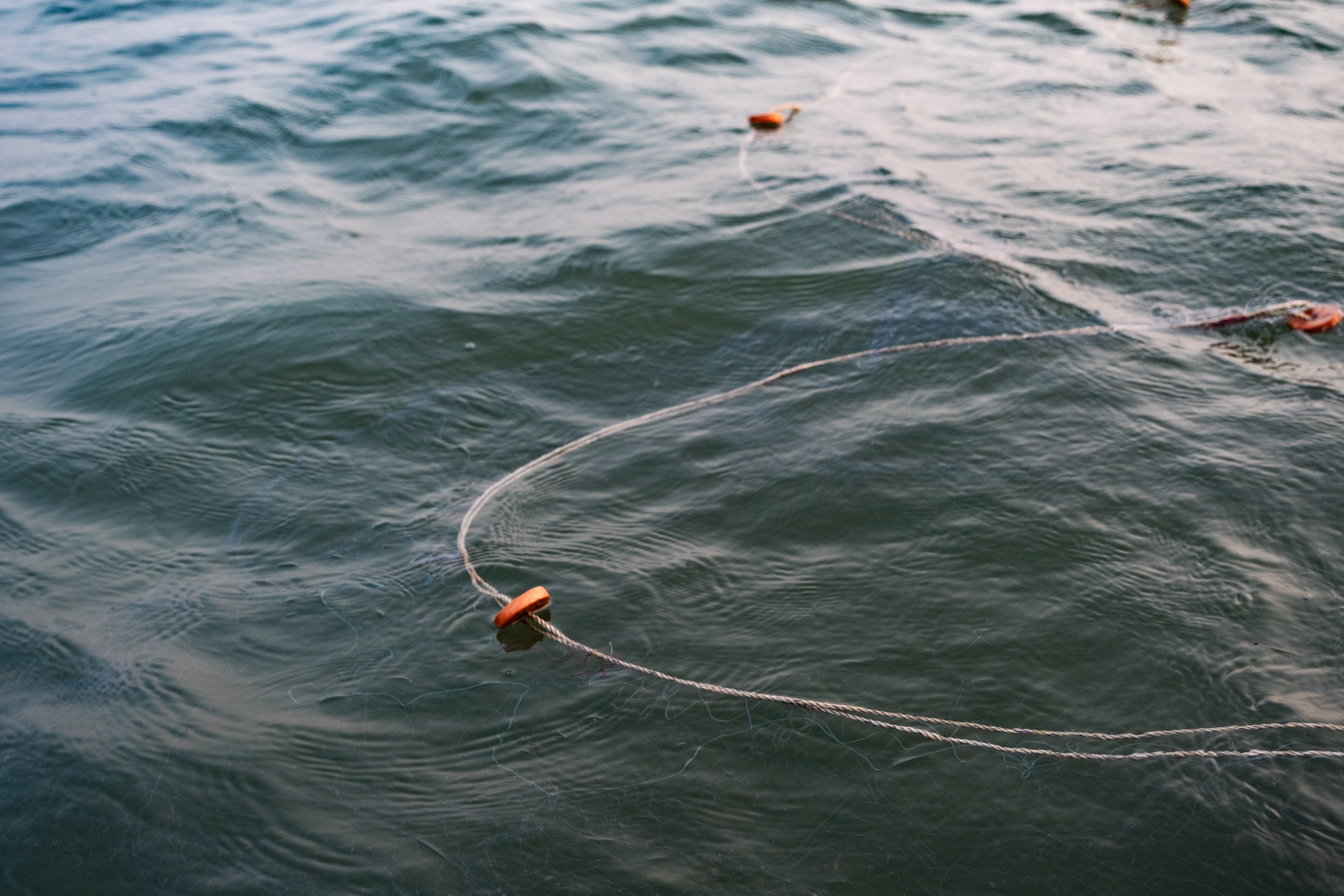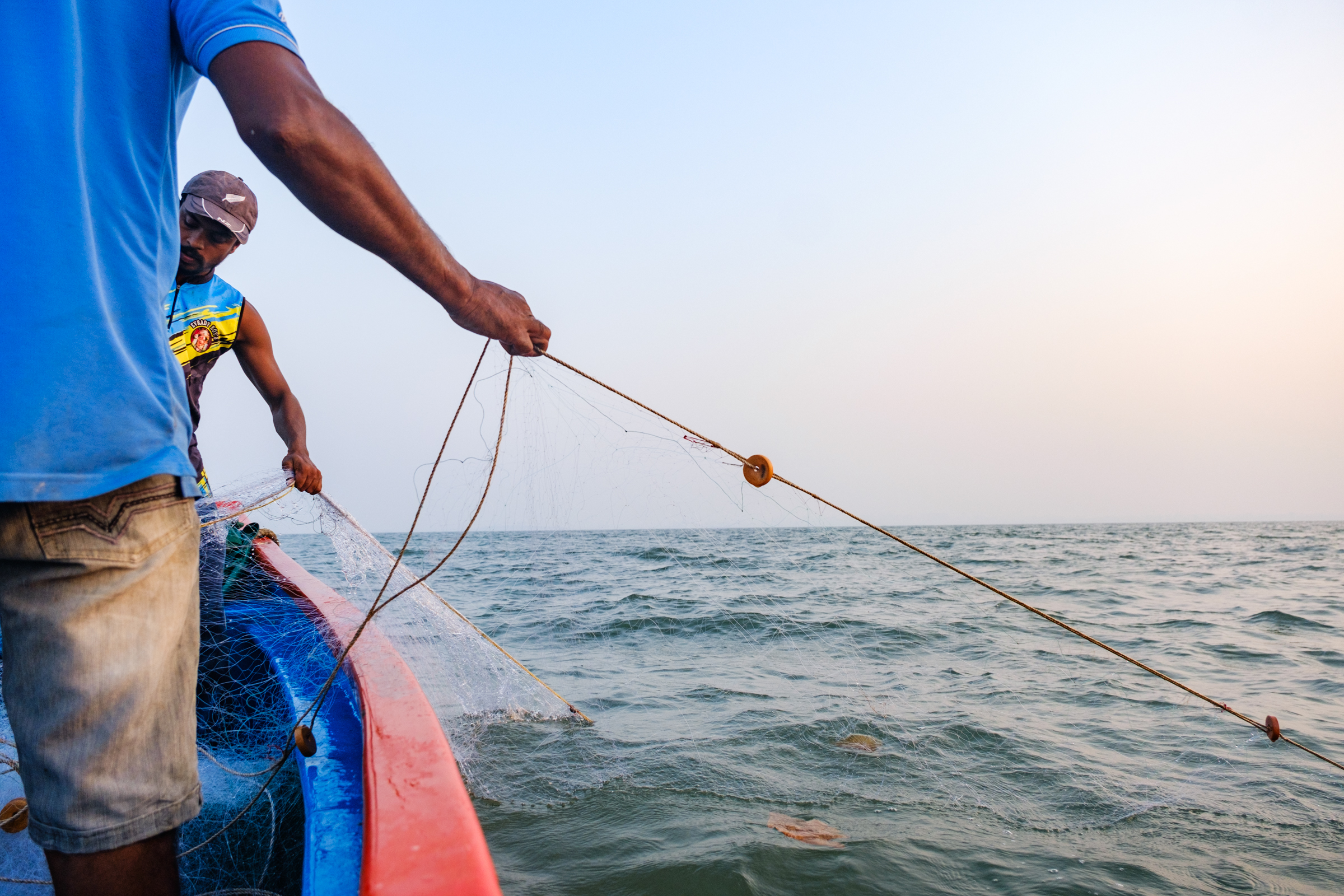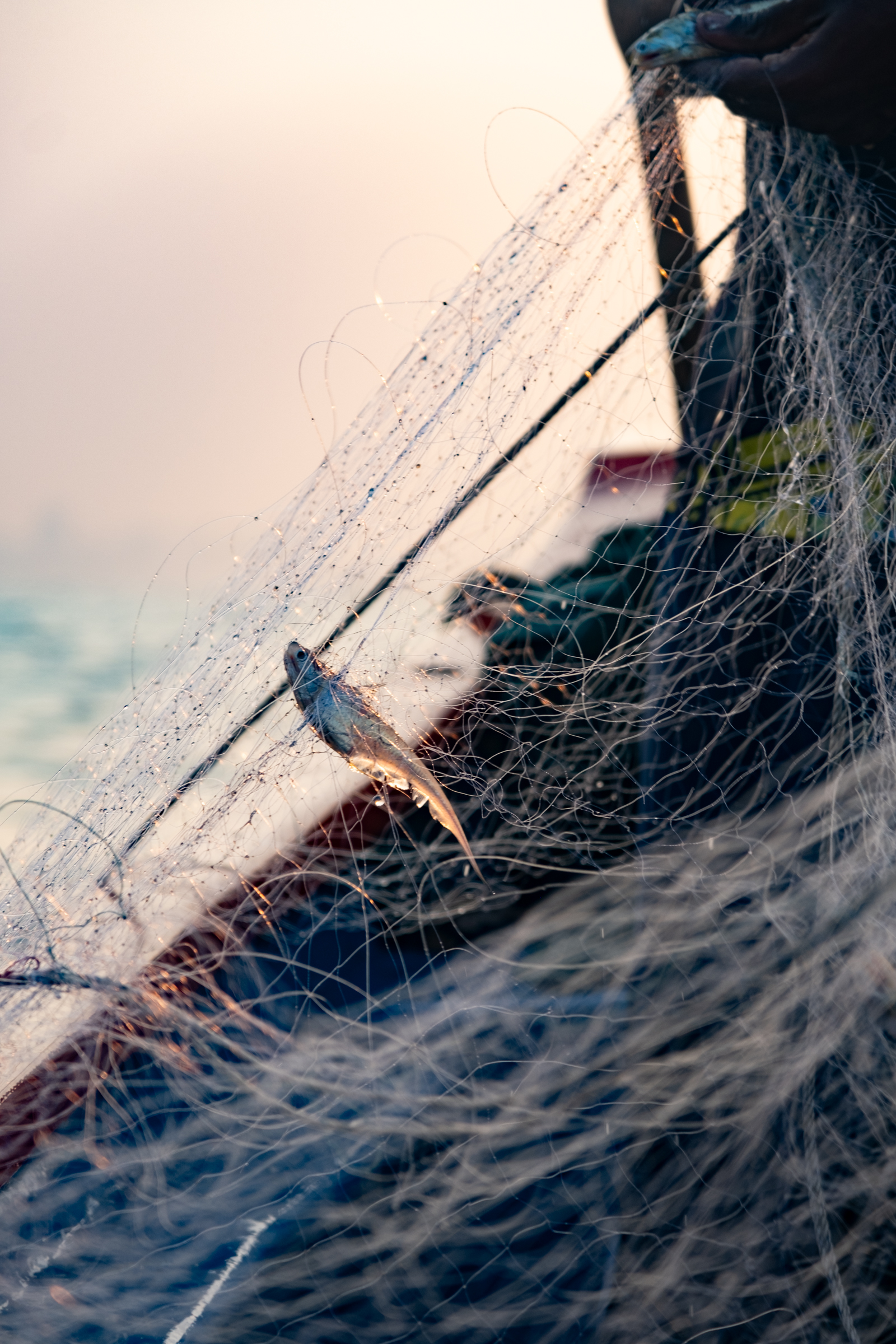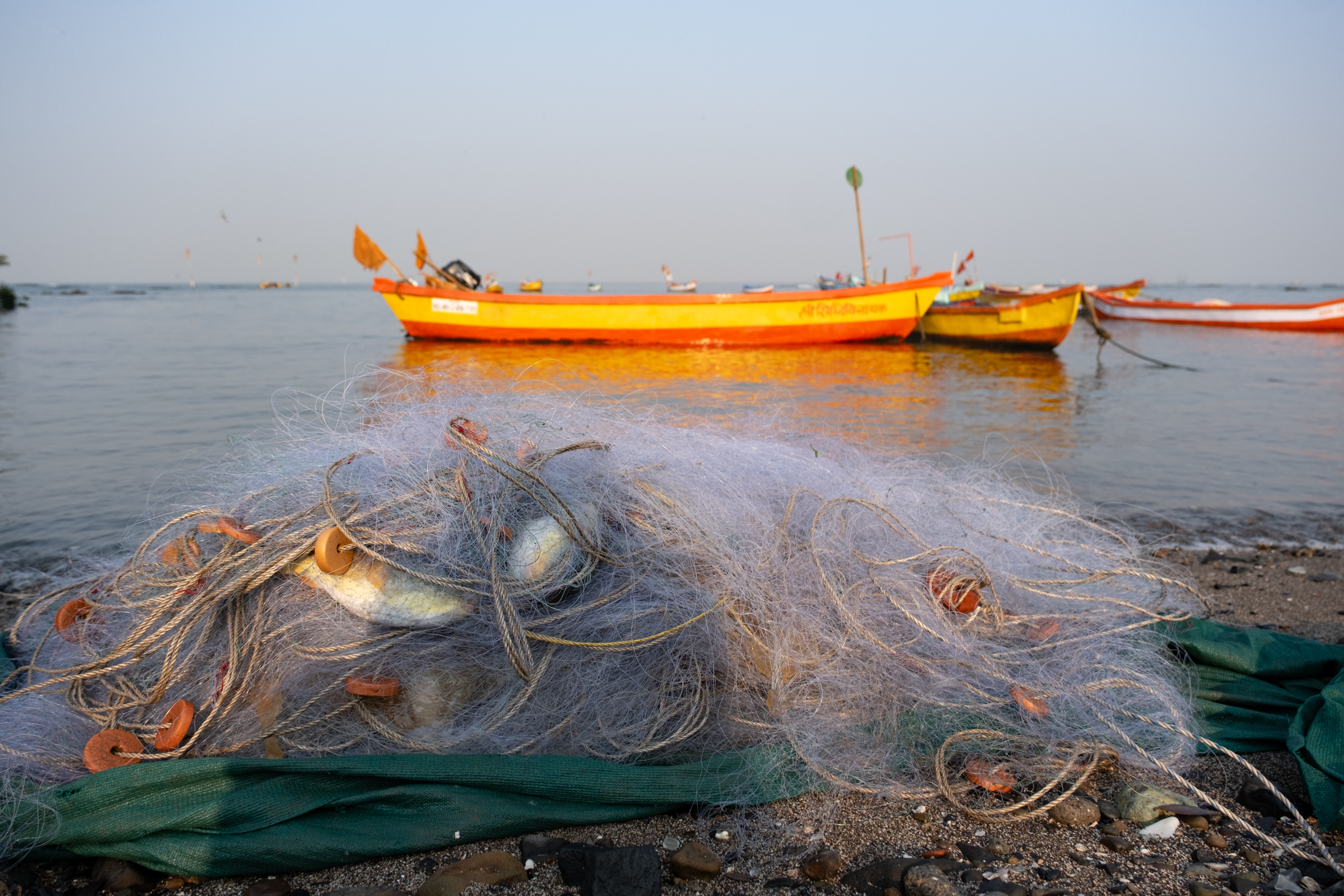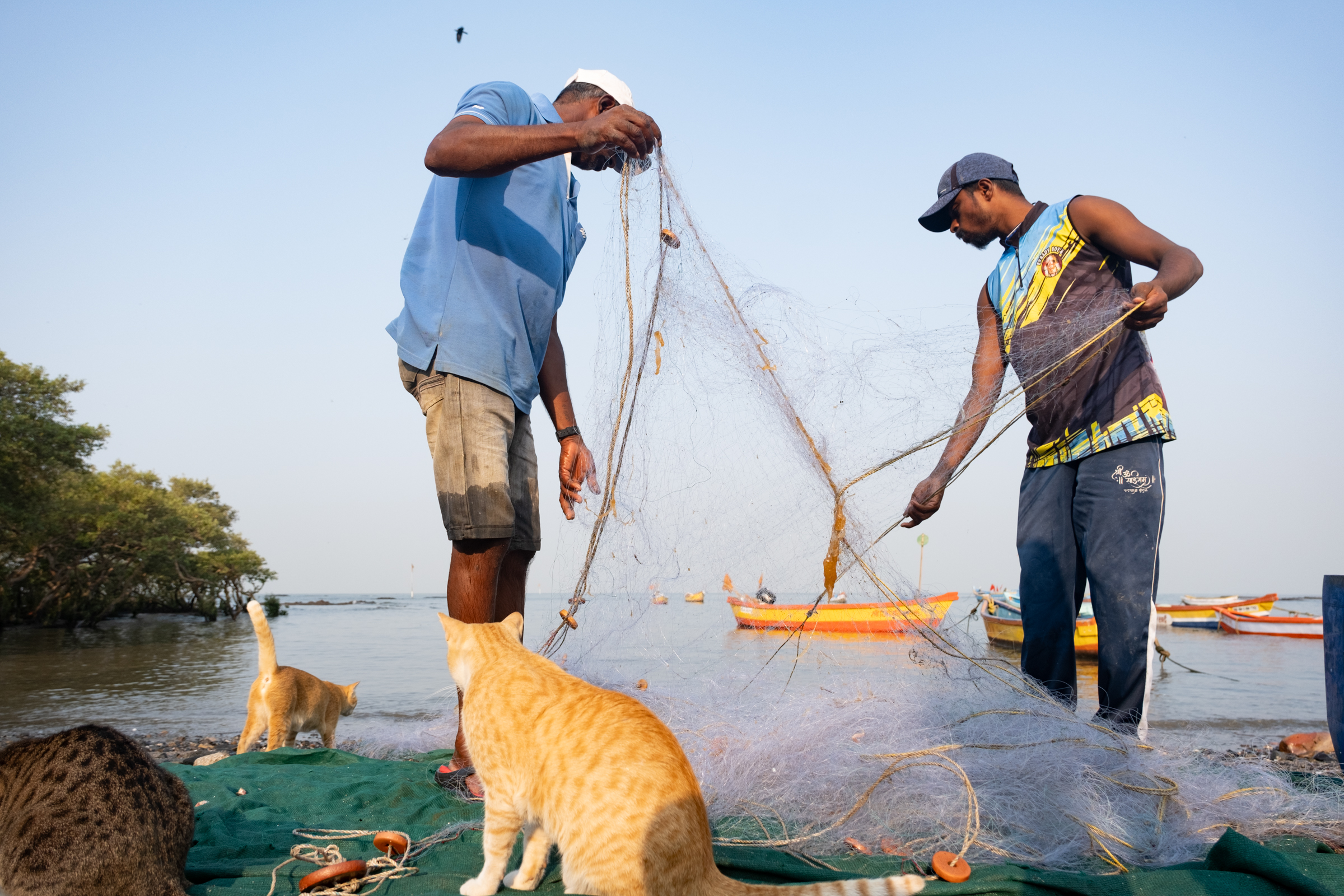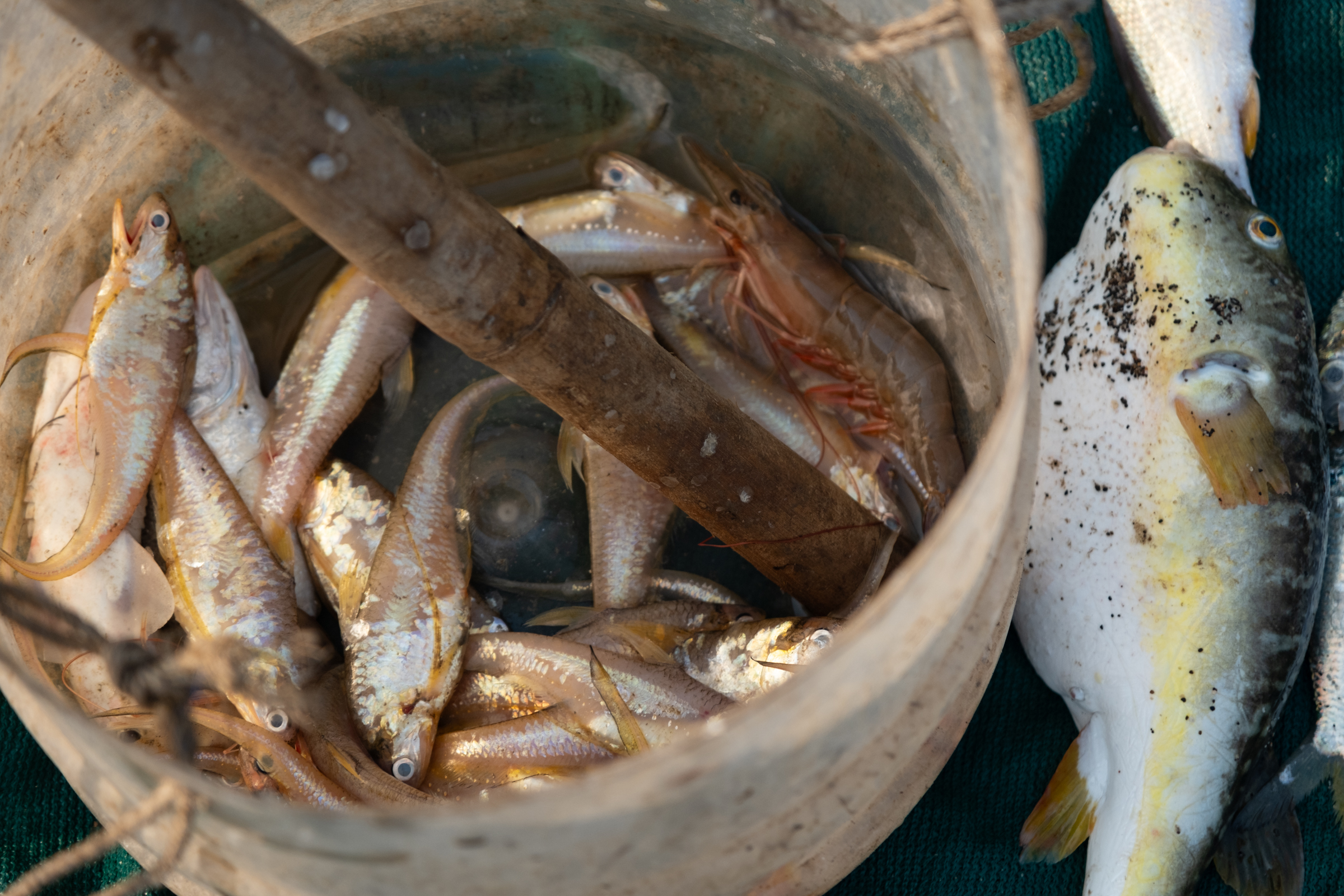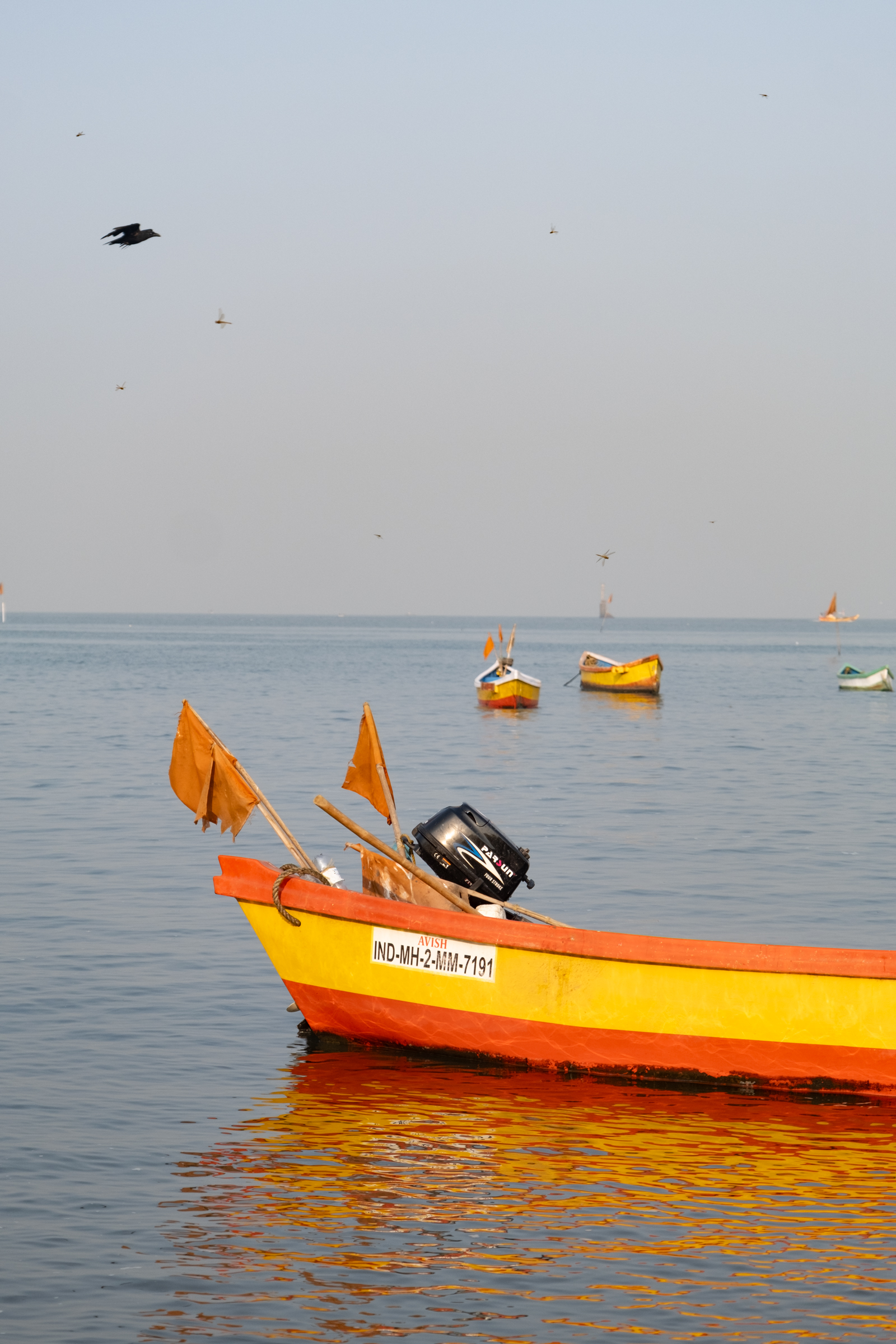Stitch in Time: The Skill of Fish Net Repair by Kolis
Koliwadas
The Kolis inhabited the coastal region now known as Mumbai long before the city came into existence. Living in hamlets scattered along the coastline, they earn their living primarily through fishing, trading, and other maritime activities, although some also engage in farming. Their settlements (Koliwadas) dot the coastline of Mumbai in places like Colaba, Worli, Juhu, Dharavi, Vasai, Versova, Khar Danda, Mazagaon, Mahim, and Sion. These quaint villages are hubs of activity from dawn when the fishermen venture for deep-sea fishing. At noon, the boats return and are unloaded, and the catch is transported to Sassoon Dock Fish Market and Crawford Market to be further sorted, graded, and auctioned off to wholesalers.
Learning the Skills
In the late afternoon, Koli men devote their spare time to repairing their fishing nets. Fishing nets require regular maintenance and repair to keep them in good condition. It is a task of utmost importance to ensure broken nets are ready as quickly as possible. Any delay in repairing nets may result in a loss of livelihood. It is also a time for social bonding, with the entire family working together. Young family members learn the skills of the craft by observing and learning from the elders.
Type of Nets Used by Kolis
Kolis fish in the creeks and mangroves along Mumbai’s coastline. In shallow intertidal zones, they rely on fixed gillnets, cast nets, and hand-held nets to trap fish that get caught during high tide. However, due to pollution, habitat destruction, and overfishing, the Kolis were forced to venture into deep waters. In the open sea, they deploy surrounding nets (used to encircle a school of fish near the water surface) and drift nets (usually set at or near the water surface and held in place by floats along the top edge and weights along the bottom edge). Kolis favour using the shahenshah, a type of fine net that consists of three layers and is designed to entangle fish by their gills as they attempt to swim through it.
Old Materials
While the primary tools and techniques used in fishing have remained unchanged for thousands of years, the material has changed with advances in science and technology. Fishing nets, for example, were previously woven from a rope made from a variety of natural fibres like coir, palm leaf, hemp, grasses, and cotton, which were sourced locally. These nets required constant maintenance and had limited size and durability. Everything changed with the invention of nylon, the first synthetic fibre to be commercially produced. In the 1950s, natural fibres began to be replaced by synthetic polymeric fibres, which were lighter and cheaper and allowed for nets to be mass-produced in factories.
New Materials
Modern fishing nets made from nylon, polyethylene, polyester, and other synthetic fibres are very strong and capable of hauling several tonnes of catch in a single haul. Due to their strength and size, they are used to make dragnets, or trawl nets, a type of large fishing net that is towed through the water behind a fishing vessel to catch fish in bulk. Dragnets are commonly used in commercial fishing operations to target bottom-dwelling species that swim near the ocean floor. However, operating trawlers is expensive and labour-intensive, requiring staying out at sea for several days or even weeks in search of a big haul.
Weaving Technique
In the past, Kolis wove the entire net by hand, but nowadays, they mostly use machine-made nets. Though hand-woven nets made from coir are still available, they are rarely used. The repair work is still done manually and takes considerable skill and practice to master. Weaving involves interlacing yarns or threads at right angles to form a grid-like structure. Repairing torn webbing requires removing the damaged portion, retying each knot, and restoring the original pattern of the mesh. The strength and efficiency of the net structure depend on the integrity of the individual meshes.
Measuring Unit
For measurement, Kolis rely on an informal unit, which they call butti. Each butti indicates the number of finger widths needed to gauge the distance between consecutive knots. The net is stretched taut with the toe and worked with both hands using tools called tasari and kathli. A tasari is a mending needle made of plastic, usually six inches long, around which the twine is wrapped. Kathli is a small knife used to cut the twine. Generally, the repair twine should have the same diameter and be made from the same material as the netting. Different materials used in the twine may cause it to break again. Only the outer lining is made from thicker twine.
Price and Durability
Kolis purchase their fishing equipment, supplies, and gear from Crawford Market, Bhuleshwar Market, and Dadar Fish Market. These markets have vendors selling a wide range of fishing-related items, including nets, ropes, floats, hooks, weights, and other essentials. Ready-made nets vary in price, depending on the material and size. Prices may vary from a few thousand to lakhs of rupees. Typically, fishing nets last between a few months and about one year, depending on daily wear and tear. Smaller nets can be repaired by an individual or with assistance from family members. Larger nets, typically those used on trawlers, are repaired by professional craftsmen. These craftsmen specialise in building or repairing nets, boats, and other fishing-related equipment using traditional methods and techniques. Although repairs can extend the durability of a net, after a point, the damage might be beyond repair, and the net will have to be replaced.
Environmental Impact
The change to nylon nets has also had an impact on the environment. Unfortunately, broken nets are useless and have no resale value. Nets lost or discarded at sea are a major environmental hazard. These drift at sea and can ensnare marine life, causing suffocation, laceration, injuries, and drowning. These floating death traps are called ghost nets. Unlike nets made from coir or natural fibres, synthetic materials do not disintegrate, and unless removed, ghost nets continue to trap sea life for years, causing severe damage to marine habitats.
Historical records suggest that the Kolis have inhabited the Mumbai coastline for hundreds, if not thousands, of years. Living in hamlets scattered along the coastline, they earn their living primarily through fishing, trading, and other maritime activities, although some Kolis also engage in farming.
Given the availability of fish-rich waters, a pleasant climate, and the economic opportunities that come with living by the coast, it is likely that the Kolis migrated to the Mumbai coastline gradually over many generations. Though they face considerable challenges in earning their livelihood, the Kolis have persevered with their traditional way of life on the sea.
A Koli man is wearing a T-shirt with the image of Ekvira Devi. The Koli community holds Ekvira Devi in high regard and seeks her blessings for protection, prosperity, and fulfilment of wishes. A temple dedicated to Ekvira Devi is situated in Karla, near Lonavala. This temple is a significant pilgrimage site for Kolis, especially during the festival of Navratri, during which thousands of worshippers flock there to seek her blessings.
The Kolis fish throughout the year, taking a break only for two months in the monsoon when all fishing activities are halted due to rough seas. The high fishing season starts in August and lasts until October, after which the catch volume declines. By January, it is the low season.
Fish drying is a common sight in Koliwadas. A significant part of the daily catch is processed as dry fish. The fish are cleaned and gutted before being hung on bamboo poles, strung on lines, or spread on flat ground, where they are left to dry in the sun for two or three days.
During the monsoon break, Koli fishermen use their spare time to upgrade their fishing equipment and repair their boats.
Nets are subject to enormous wear and tear and must frequently be repaired. Nylon is the preferred material for fish nets because it is light, cheap, and strong.
Rajesh Pardesi goes fishing in the morning and repairs nets in the afternoon. Every day, he repairs roughly two to three nets. As seen here, he stretches the net with his toe to make the net taut, which helps him weave the twine.
Rajesh Pardesi is adding an extra layer of nylon thread to strengthen the net. Net repair is learnt through observation and practice, a skill passed down through generations. Rajesh acquired it from his grandfather and father by assisting them from a young age.
Net repair is done entirely manually, using simple tools like tasari and kathli. A tasari is a mending needle made of plastic, usually six inches long, around which the twine is wrapped. Kathli is a small knife used to cut the twine.
The strength and efficiency of the structure depend on the integrity of the individual meshes. Repairing torn webbing means retying each knot and restoring the original pattern of the mesh. Generally, the repair twine should have the same diameter and be made from the same material as the netting. The key to good repair is to maintain the integrity of meshes.
Appropriately titled Shahenshah, this net is regarded as the king of nets. It has three levels that ensnare fish of various sizes. Only a few people have the ability to craft this complex net, which takes a full day to fix and repair.
Kolis use an informal unit for measurement they call butti, indicating the number of finger widths needed to gauge the distance between consecutive knots.
Until the twentieth century, nets were made from natural fibres obtained from coir, palm leaf, hemp, and grasses. Later, cotton was also used. In the 1950s, natural fibres began to be replaced by synthetic polymeric fibres, which lasted longer, were cheaper and lighter, and allowed for mass production in factories.
Koli fishermen know how to repair nets, and modest-sized nets can be repaired with the help of family members. However, major damage requires a specialised repair facility. These repairs are done by professionals who employ teams of men working together in large workshops.
Repairing damaged nets, instead of replacing them with new ones, is necessary because of their high cost. A high-quality fishing net carries a substantial price tag, often up to one lakh rupees. These nets have a lifespan of approximately six months to one year.
A Koli man makes his way to a Ganapati shrine, walking over a causeway that is accessible only during low tide. During high tide, the shrine goes underwater, and its location is marked only by the flags sticking out from the surface.
Before setting out to sea, fishermen visit the Ganapati shrine to offer prayers. In 2004, this offshore platform was built on top of a naturally occurring rock formation.
Koli fishermen venture to sea when it is still dark, usually around 5 a.m., taking advantage of the high tide and reaching their netting points before sunrise. The tide plays a crucial role as fewer fish are caught during low tide, while high tide brings an abundant catch.
On the open sea, fishermen are guided by LED lights placed on buoys that indicate the presence of a net. The lights also serve to designate areas where nets have already been deployed so that others do not place nets in the vicinity.
After waiting a few hours, depending on the weather and other factors, the nets are hauled, and boats return by noon. Larger trawlers, which have bigger nets, remain at sea for several days and leave their nets in the sea overnight.
In the open sea, Kolis deploy surrounding nets (used to encircle a school of fish near the water surface) and drift nets (usually set at or near the water surface and held in place by floats along the top edge and weights along the bottom edge).
Along with the target fish, the nets also end up with bycatch. Jellyfish are a common bycatch and are removed from the nets immediately because they have a poisonous sting.
Koli fishermen have been struggling with depleting fish populations caused by environmental degradation and overfishing. To find more fish, they venture further out at sea, where rare species like tiger sharks, whale sharks, sea turtles, stingrays, and sawfish accidentally become bycatch.
Upon returning, the nets are hauled to shore. Smaller fish are removed easily. However, larger fish tend to struggle and need to be disentangled carefully to prevent damage to the nets.
The waters off the coast of Mumbai, located in the Arabian Sea, are rich in marine biodiversity and support a diverse range of fish species. Some of the various types of fish commonly caught in these waters include the kingfish, also known as surmai, mackerel (bangda), pomfret (paplet), Bombay duck (bombil), sardines (tarli), red snapper (rane), cuttlefish (kanphoda), and prawns (jhinga). Exotic species, like sharks, tuna, lobsters, squids, and oysters, are also sold at the markets.
Once offloaded, the fish are preserved in ice and transported to wholesale markets. In Mumbai, there are several wholesale fish markets, including the Sassoon Dock Fish Market and Crawford Market, where the catch is further sorted, graded, and auctioned off to wholesalers, retailers, and fishmongers.
Fishing boats must be registered with the relevant maritime authorities, such as the Maharashtra Maritime Board (MMB) or the Mercantile Marine Department (MMD). Additionally, boat owners and operators may need to obtain licenses or permits to operate their vessels legally. These licenses may include fishing permits, vessel registration certificates, and crew licenses.
